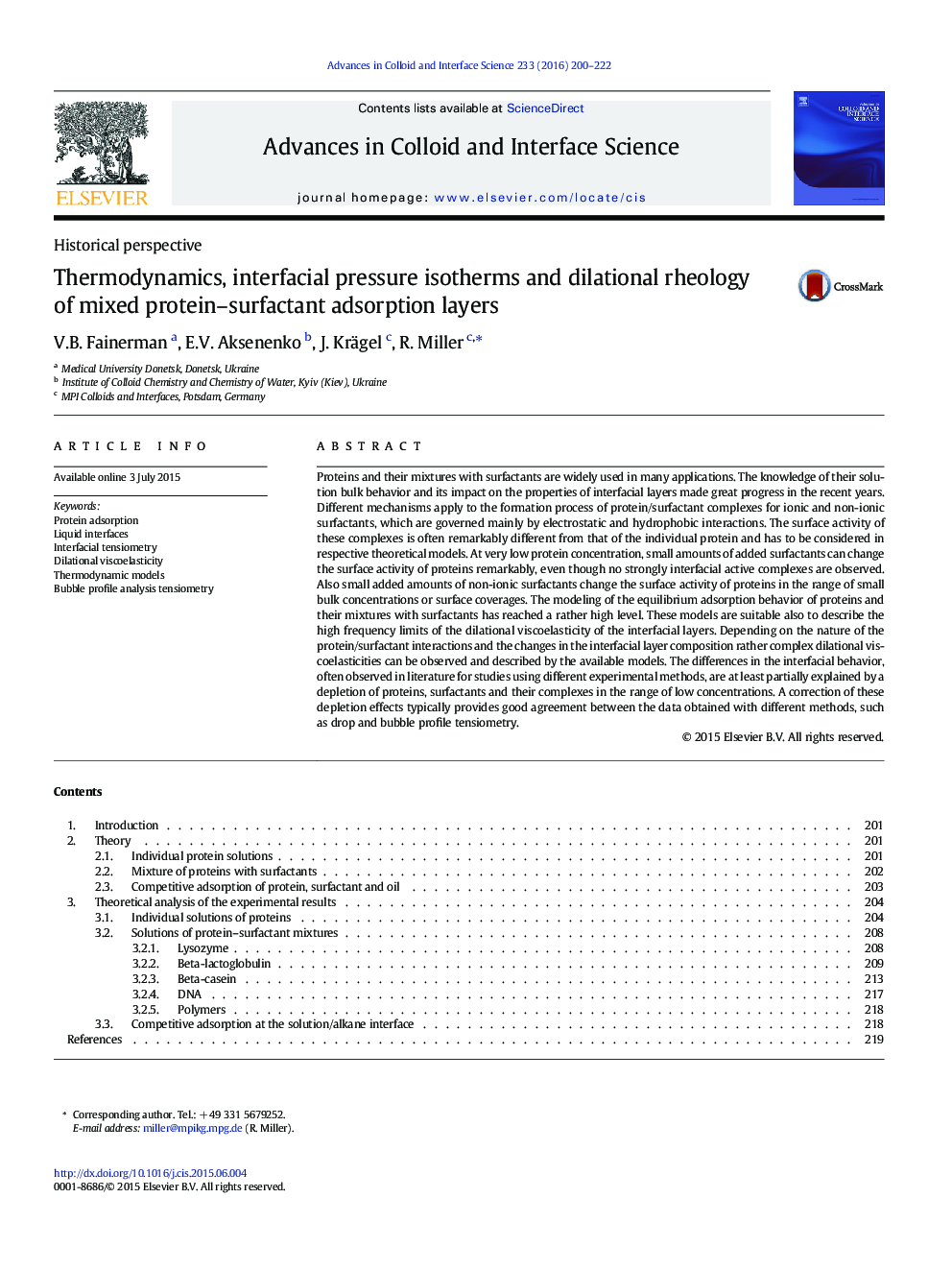| کد مقاله | کد نشریه | سال انتشار | مقاله انگلیسی | نسخه تمام متن |
|---|---|---|---|---|
| 590593 | 1453531 | 2016 | 23 صفحه PDF | دانلود رایگان |
• The adsorption of proteins and their mixtures with surfactants is described.
• The understanding of the mixed layers is supported by thermodynamic theories.
• The models for the adsorption isotherms allow us to describe also the dilational viscoelasticity.
• Due to the interaction with surfactants the interfacial activity of proteins is changed.
• Even small amounts of added surfactants can increase the protein's activity.
Proteins and their mixtures with surfactants are widely used in many applications. The knowledge of their solution bulk behavior and its impact on the properties of interfacial layers made great progress in the recent years. Different mechanisms apply to the formation process of protein/surfactant complexes for ionic and non-ionic surfactants, which are governed mainly by electrostatic and hydrophobic interactions. The surface activity of these complexes is often remarkably different from that of the individual protein and has to be considered in respective theoretical models. At very low protein concentration, small amounts of added surfactants can change the surface activity of proteins remarkably, even though no strongly interfacial active complexes are observed. Also small added amounts of non-ionic surfactants change the surface activity of proteins in the range of small bulk concentrations or surface coverages. The modeling of the equilibrium adsorption behavior of proteins and their mixtures with surfactants has reached a rather high level. These models are suitable also to describe the high frequency limits of the dilational viscoelasticity of the interfacial layers. Depending on the nature of the protein/surfactant interactions and the changes in the interfacial layer composition rather complex dilational viscoelasticities can be observed and described by the available models. The differences in the interfacial behavior, often observed in literature for studies using different experimental methods, are at least partially explained by a depletion of proteins, surfactants and their complexes in the range of low concentrations. A correction of these depletion effects typically provides good agreement between the data obtained with different methods, such as drop and bubble profile tensiometry.
Figure optionsDownload as PowerPoint slide
Journal: Advances in Colloid and Interface Science - Volume 233, July 2016, Pages 200–222
